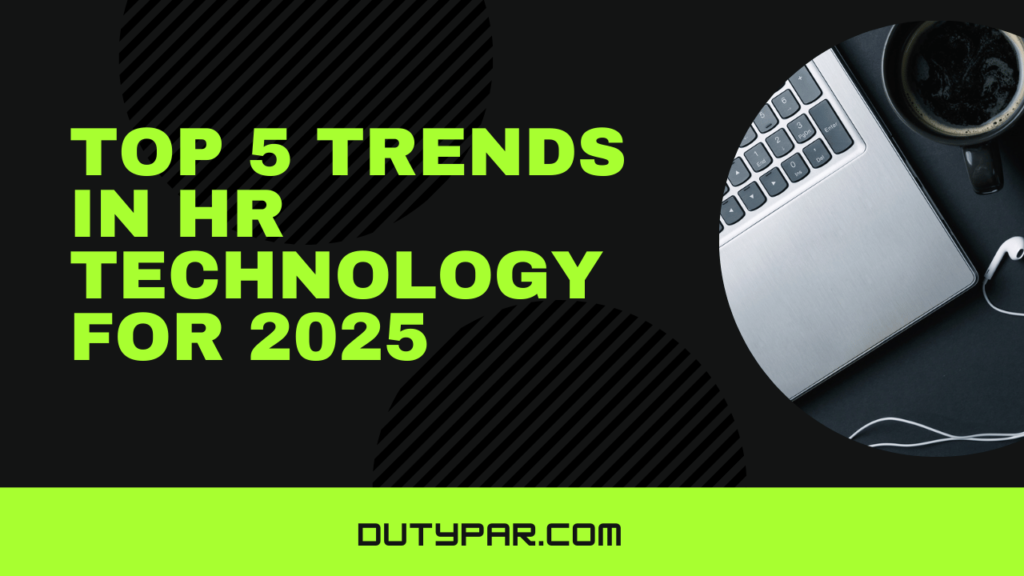
Table of contents
Introduction
The future of Human Resources (HR) is being shaken to its very foundations by technology adoption. The year 2025 has HR departments around the world using innovative tools to facilitate processes, boost employee engagement, and optimize workforce management. Here are the top five trends in HR technology shaping the future of work.
1. AI-Driven Talent Management
Artificial Intelligence (AI) has become a cornerstone of modern HR practices. Tools like IndoAI are enabling organizations to identify, recruit, and retain top talent more effectively than ever before. AI-driven platforms can:
- Automate Recruitment: AI algorithms analyze resumes, rank candidates, and schedule interviews, reducing time-to-hire.
- Enhance Employee Engagement: Chatbots and virtual assistants provide personalized support, answer queries, and recommend training programs.
- Improve Retention Rates: Predictive analytics identify employees at risk of leaving and suggest interventions.
By leveraging AI, HR teams can make data-driven decisions, ensuring a more diverse and inclusive workforce.
2. Touch-Free Attendance with Facial Recognition
In the wake of the pandemic, touch-free attendance systems have become a priority for many organizations. Facial recognition technology, integrated into platforms like DutyPar, is revolutionizing how companies track employee attendance.
Key Benefits:
- Hygienic and Contactless: Eliminates the need for shared devices like biometric scanners, ensuring workplace safety.
- Accurate Time Tracking: Facial recognition minimizes errors and prevents buddy punching.
- Seamless Integration: These systems integrate with payroll and HRMS platforms, simplifying administrative tasks.
Touch-free attendance systems not only enhance security but also improve employee satisfaction by providing a seamless experience.
3. Hyper-Personalized Employee Experiences
Employees today expect experiences tailored to their unique needs and preferences. Using advanced analytics and AI, HR teams can offer:
- Custom Learning Paths: Personalized training programs that align with individual career goals.
- Flexible Work Options: Data-driven insights into productivity patterns help design hybrid work policies.
- Wellness Recommendations: AI identifies stress patterns and suggests mental health resources.
This trend underscores the importance of treating employees as valued stakeholders, fostering a culture of engagement and loyalty.
4. Blockchain for Secure HR Operations
Blockchain technology is emerging as a game-changer in HR, offering unmatched security and transparency. Its potential applications include:
- Credential Verification: Instantly verify candidate credentials, reducing hiring fraud.
- Secure Payroll: Ensure timely and error-free salary payments with immutable records.
- Employee Data Protection: Safeguard sensitive information with decentralized storage.
As data breaches become more common, blockchain offers a robust solution for safeguarding HR operations.
5. Advanced People Analytics
Data is at the heart of modern HR practices. Advanced people analytics tools help organizations understand their workforce better, leading to:
- Informed Decision-Making: Real-time dashboards provide actionable insights into employee performance and satisfaction.
- Proactive Workforce Planning: Predict future hiring needs and optimize resource allocation.
- Enhanced Diversity Metrics: Monitor and improve workplace diversity initiatives.
By harnessing the power of analytics, HR teams can drive meaningful organizational change.
Conclusion
The HR technology landscape in 2025 is defined by innovation and adaptability. Tools like DutyPar and IndoAI are leading the charge, empowering HR teams to create more efficient, engaging, and secure workplaces. From AI-driven talent management to blockchain-enabled security, these trends are reshaping the way organizations manage their most valuable asset: their people.
By staying ahead of these trends, businesses can not only attract and retain top talent but also build a culture of trust, innovation, and growth.





